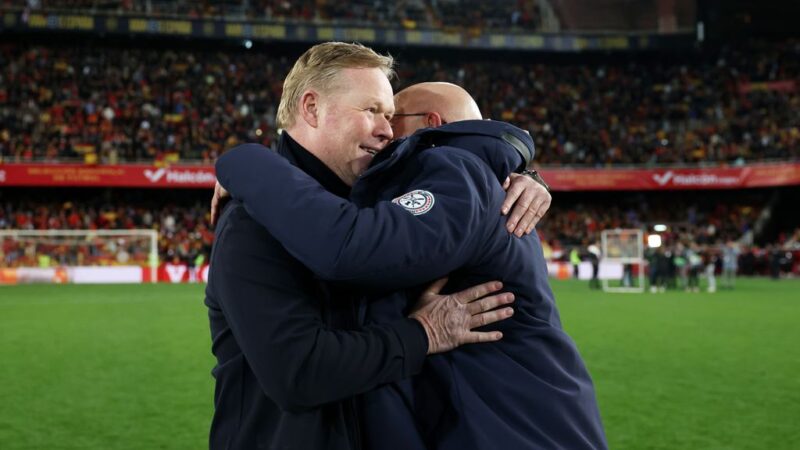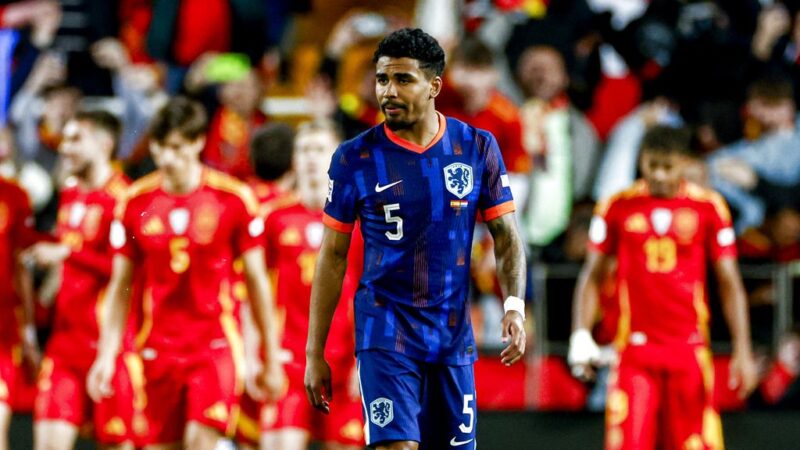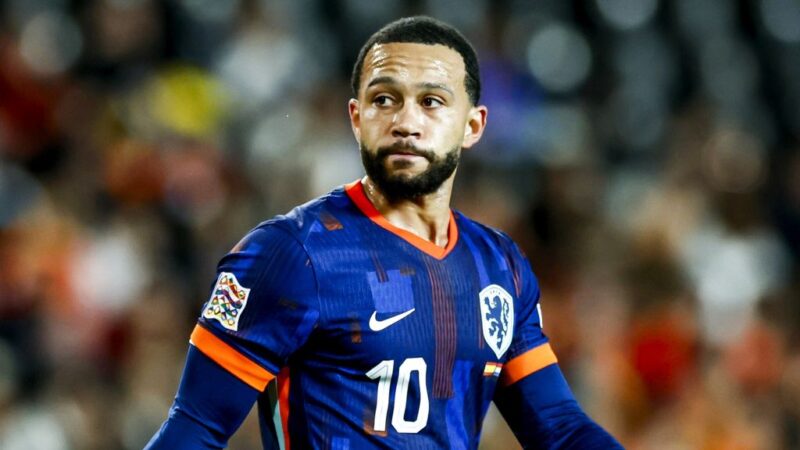‘You’re not quick to indicate you’re tired, soon you won’t be drafted’

NOS Football–
-
Jonna ter Veer
editor of NOS Sports
-
Jonna ter Veer
editor of NOS Sports
Of all the top soccer players nominated for the Ballon d’Or last year, a quarter are sitting at home with an anterior cruciate ligament injury. How is this possible? In a series of three stories, NOS Sport dives into this subject. Today part 2: what about the busy, increased playing schedule and recovery time?
Over the past decade, Olympique Lyonnais and Oranje player Daniëlle van de Donk has had a maximum of ten consecutive days of vacation per year, she estimates. “Last Christmas I was free for ten days in a row. That was nice.”
After day five, she did have to get back to intensive strength training. “I’m not used to anything else. It’s really very little, especially considering the number of matches you play at the top.”
Currently, a quarter of the top 20 soccer players in the world are sitting at home with an anterior cruciate ligament injury, or serious knee injury. “When you’re really good, you play a lot,” Van de Donk said. “Putellas, Mead, Katoto, those are your best players, you always draft them. They pull the cart. You let those play every minute, without them it just doesn’t stand up as well.”
Top soccer players and coaches cite the large number of games as a risk factor, as do doctors and researchers. Doing more with less rest means a higher load, increasing the risk of injury.
How much do top soccer players actually play? And when are they at extra risk? More on that in a moment.
“I played more than 50 games last year. We are coming off a season with 25 to 30 games. The step up has just been way too big,” said Orange player and Arsenal striker Vivianne Miedema, who tore her anterior cruciate ligament last December.
The strain on players has only increased in recent years. Five major tournaments in seven years. The Champions League now starts with a group stage, which means more matches.
To that will be added this fall the Nations League, a competition to replace practice internationals.
Jonker spares players
Orange national team coach Andries Jonker chose not to call up some players late last year to give them more rest. In October, this involved Stefanie van der Gragt, Dominique Janssen, Lieke Martens and Shanice van de Sanden. In November, Miedema and Jill Roord were missing. In November, Van de Donk barely trained with the Orange.
Do the math: that’s seven top players who were spared.
“We appeal to women who will be playing their fifth major tournament in seven summers next summer (the World Cup). That is unthinkable in men’s soccer,” Jonker told NOS earlier.
See why Jonker is concerned here:
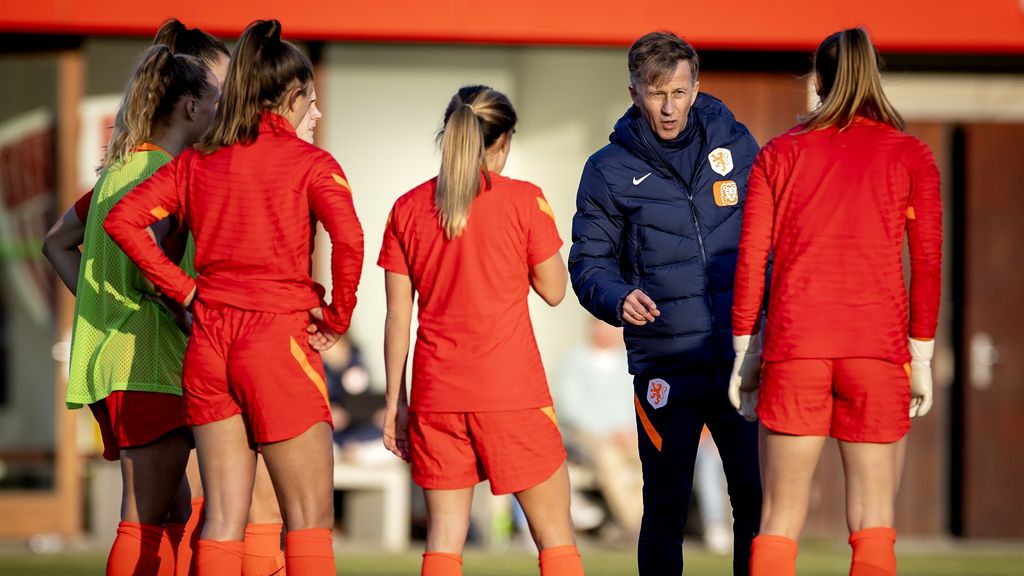
Andries Jonker: ‘There needs to be a less busy schedule’
We used data from Playmaker to figure out how many playing minutes Alexia Putellas, the best soccer star in the world, played last season at FC Barcelona: 4,068. Three seasons before that, she played “only” 3,178 minutes.
Miedema went from 2,951 minutes to 3,898 in that period. Like Putellas, that’s about 30 percent more, over a three-year period.
Higher level, less rest time
Wolfsburg coach Tommy Stroot sees that the level of women’s soccer has skyrocketed in the last five to 10 years. And that there is less and less rest time for players. But, he says, “Playing time doesn’t say everything about the number of injuries.”
It’s a combination of several factors, he believes. “I firmly believe that with the right balance of load and recovery, you can handle a lot,” he says.
-

ANP / NOS
-
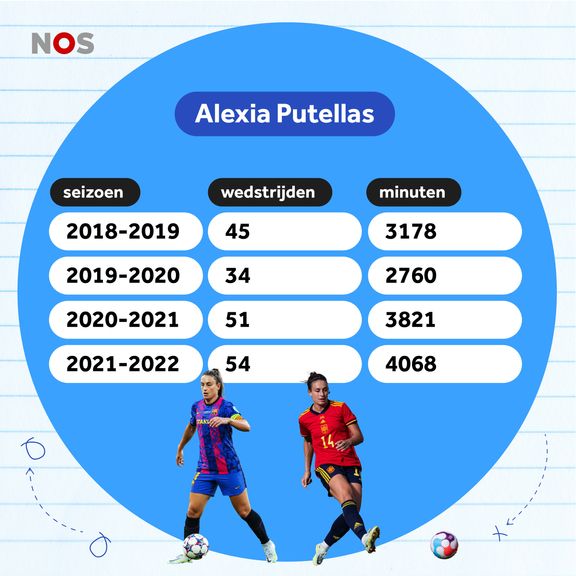
ANP / NOS
You have to help players with that. Van de Donk says she herself is not good at catching rest. “Men go to their hotel room and do a little Netflix, Andries (Jonker, ed.) told me. But I’m going to learn French words. I just can’t do nothing.”
She also says, “You always want to play. You don’t easily indicate that you’re tired, because soon you won’t be drafted.”
Data gives insight
Stroot recognizes this. Like other trainers at top clubs, he therefore charts as much data on players as possible, from their menstrual cycles to blood values, which can give a picture of the fitness and taxability of the players. “If something stands out in that, we enter the conversation.”
This also happens at Olympique Lyonnais, Van de Donk says, but she is also critical. “If you have had a tough training session and have bruises, your blood levels also go up. That then says nothing about how fit you are.”
The Wolfsburg coach concurs: “Dates are not the way, but they are important to monitor the players. With the goal that everyone stays fit, both physically and mentally.”
Stroot is also leashed with his players in terms of schedule. “In addition to club matches, we look at all the tournaments they play. How many vacations and days off do we give which player to avoid injuries?”
To do that, he and the medical staff and physical trainers look at the individual. “It’s about the right balance between strain and relaxation. At Wolfsburg we have four full-time physios and physical coaches, comparable to a male premier league club. They provide maximum guidance so that the high match frequency is achievable. Some players we schedule a weekend off, because they won’t indicate that themselves.”
Calculation
He does not see himself as a benefactor; he is employed by a commercial company and it must also be feasible. But for himself, Stroot makes an unsubstantiated calculation: “If a player is out for two weeks because of an injury, it takes her four weeks to get back to her level, is my experience. I’d rather avoid that.”
There is even a separate cruciate ligament club led by a physical trainer.
That Stroot has such a large support staff is related to money and inequality. At FC Twente, where he trained the women from 2016 to 2021, he had only one physio. He often drafted the same players because the quality of the selection was more limited in width.
“Of course, that also has to do with budgets. At Wolfsburg we were able to put together a selection of 25 players. This makes it easier to rotate once, without losing quality right away.”
He hasn’t had a single anterior cruciate ligament injury at Wolfsburg this season, although he doesn’t want to get ahead of himself on that: “You can never rule it out, but we are doing everything we can to prevent it, so I hope we are spared it.”
Knee injury at 12 top clubs
Top clubs have an average of 0.75 anterior cruciate ligament injuries per women’s team per season, says UEFA chief researcher Marcus Waldén. For men, the figure is half that, he says.
To do this, the European Football Association analyzed injury data from 2018 to 2021 from 12 of Europe’s top clubs, including Ajax, Olympique Lyonnais, Manchester City, FB Barcelona and Bayern Munich. “That 0.75 per women’s team per season is a stable average,” Waldén said.
Looking at the situation now, a few things strike us. For example, have 57 players in the top six leagues in 2022 tore their anterior cruciate ligament, reports Soccer Donna, including thus five who were nominated for a Ballon d’Or.
Van de Donk, who tore her anterior cruciate ligament when she was 17, said that at Lyonnais there are currently six (!) anterior cruciate ligament injuries. “There is even a separate cruciate ligament club led by a physical trainer,” she said.

Rehabbing Van de Weteringh: ‘When I was in pain, I just played with three ibuprofen’
To assess the situation in the Netherlands, we asked all 11 premier league clubs how many anterior cruciate ligament injuries they have (had) since January 2021. Four clubs shared this number with us. Based on their information, the average per team per season is 1.9, or two and a half times higher than the average cited by UEFA.
It goes up and down
UEFA researcher Waldén explains this by saying that injury rates fluctuate. He also often sees injury clusters at specific clubs: “For example, there are then three seasons of no anterior cruciate ligament injuries at club X and suddenly the club has three within six months.” He calls this “difficult to study and explain scientifically.”
Anterior cruciate ligament researcher Alli Gokeler of Amsterdam UMC calls his colleague’s UEFA research very important. At the same time, he suspects that we have a point with our “hand count” and that the numbers are higher.
“UEFA depends on the clubs that participate, which are only 12, so you miss a lot of data. And the numbers always come a bit later. Logical, because the data has to be analyzed.” He does see trends at the national level, such as so those 57 injured top players in 2022.

Sportexplainer: buckling knees in women’s soccer
Gokeler also sees an injury spike at set times: “We saw a third of all anterior cruciate ligament injuries in the first two months of this season. And the second peak after the winter break, so there seems to be a link to the transition from rest to competition.” Something that also played out after corona, he says.
Gokeler advocates more individual analysis. “You have to make a risk profile per player. That means mapping what an interplay of factors, such as mental state, fatigue, muscle strength and hormones, means for an athlete.”
Next episode Thursday, Feb. 23: Teenage soccer players at huge risk of anterior cruciate ligament injury. The previous episode “Miedema, Mead and Putellas: why so many cruciate ligament injuries in top soccer players?” can be found here.
Are you a professional soccer player yourself and want to respond to this story? Then send us a message at vrouwenvoetbal@nos.nl


